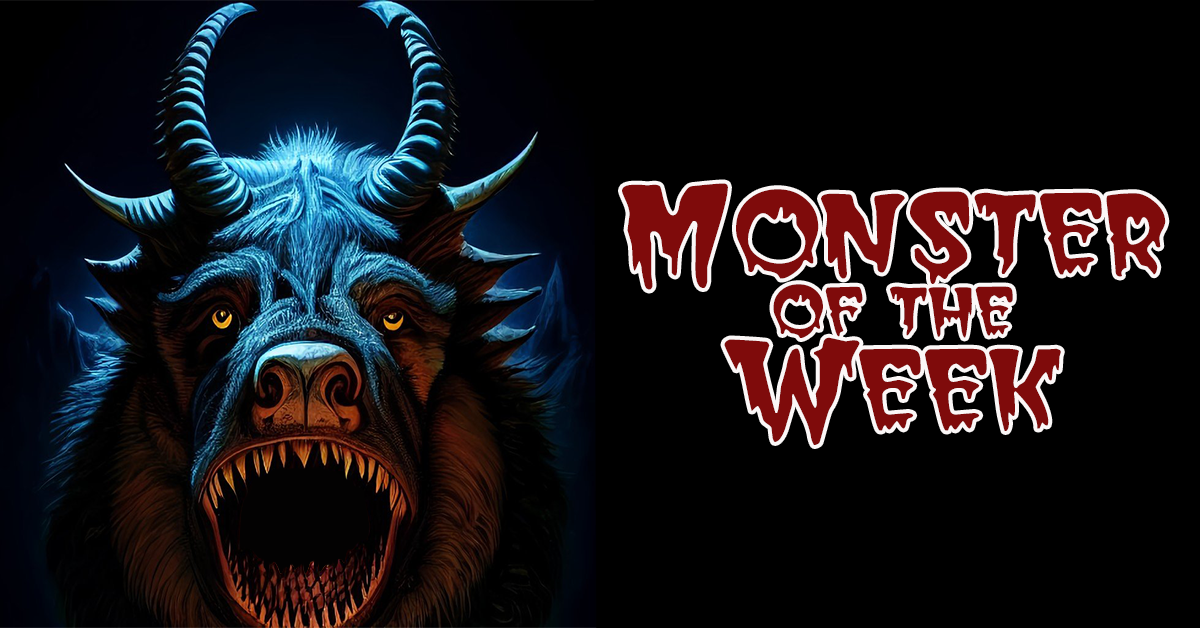We may earn money or products from the companies mentioned in this post.
Now that I’ve picked through the D&D 5E rules in way too much detail, it’s time for a general look at the good, the bad, and the Drow Rangers who dual-wield scimitars. There are a lot of possible ways to break it all down, but I’m going to go with three categories: Rules (Do they work?); Continuity (Does it still feel like D&D?); and Execution (How well-crafted is the final product?) For those who haven’t been around long enough, I’ll be dusting off the old 6 Yum Yum rating scale, where 0 is a dumpster fire and 6 is a magical burrito.
Rules
If you’re comparing the 5E rules to other games on the market, they’re going to come up short. They’re not bad, but there’s nothing really innovative about them and there are a lot of rules concepts that have been replaced by something better in most games. But I don’t think you can really judge them as a rules set without considering continuity. The rules still need to feel like D&D. While the D&D core rules have undergone lots of changes over the years (including the Armor Class pole shift that destroyed the mighty THAC0’s natural habitat), there are some rules that are so central to the D&D experience that getting rid of them would make it feel like a different game. Sure, most games have figured out that including a separate die roll for damage is overly time-consuming, but if a longsword doesn’t do 1d8 points of damage, are you still playing D&D? The same goes for the wonky spell system, saving throws, and lots of other things that game designers have found more elegant solutions for over the years.
The their credit, the 5E designers did an excellent job of working around the worst of the “required to be considered D&D” rules to make them less problematic. Spellcasting is probably the best example. You’re still stuck with the Vancian magic system, because it’s D&D. But the magic system itself has several improvements to make spellcasters more versatile AND the rules give spellcasters a lot of other options (cantrips, ritual casting, etc.) that allow them to keep being wizards once they’ve used up their spell slots instead of instantly becoming useless eggheads who mostly just slow the party down.
As for the rules that aren’t basically “product identity,” the designers did a good job of stripping things down to their simplest form, getting rid of wonky gradients and minor variations that never really added much to the experience (and sometimes actively detracted from it). I’m sure there are some people (I think they’re called “gatekeepers”) who bemoan the “dumbing down” of the rules to make them playable without a scientific calculator, but I like the simplification. In addition to improving playability, getting rid of the piddly stuff makes the rules lean more toward rewarding players who come up with clever and interesting ideas in the context of the game setting and story rather than rewarding players who have memorized the modifier tables. They could have done better, though. There are some rules that have been simplified so much that they’re basically meaningless in terms of impact on the game. These probably should have been either cut or rewritten to be worth bothering with.
Overall, the designers did a great job of making the game more accessible to new and casual players, and that’s important. While there are more people than ever who find tabletop gaming through some route other than D&D, D&D is still the most common “gateway RPG.” That means that all of us who want the hobby to grow benefit from a Dungeons & Dragons that doesn’t scare people away with unnecessary complexity.
4/6 Yum Yums
Continuity
Does the game feel like D&D? There are really two halves to this question: do the rules play the way we expect D&D to play and does the story/role-playing aspect of the game match what we think of when we think of D&D? Since I just finished talking about rules, let’s start there. It wouldn’t surprise me one bit to find out that some long-time D&D players hate the new rules set. I mean, I’ve met people who thought Non-Weapon Proficiencies ruined the game, so cutting whole tables down to an Advantage or Disadvantage die has to be a travesty, right? I’m not going to count those people, because I suspect that the Venn diagram of “people who think 5E is an abomination” and “people whose sense of self-worth is tied to their deep knowledge of D&D rules in a very unhealthy way” is a perfect circle.
For those on the “functional human being” side of the debate, there are probably people who miss some of the gratuitous crunch of the older editions, but I think most would agree that Fifth Edition retains all the game mechanics and concepts that make up the core of D&D: Class-based character creation, a d20 roll as the central mechanic, time-consuming separate rolls for weapon-based damage, Vancian magic, alignment, and all the rest. A lot of the rules are improved or simplified, but overall it still seems like D&D, at least based on a read-through of the rules. Actual play could be a completely un-D&D-like experience, but based on the number of long-time players who seem to like the new rules just fine, I doubt that’s the case.
As for the non-mechanical elements, it’s important to remember that (as I said some-teen posts ago) D&D has become its own genre. It’s not a general purpose fantasy rules set that you can use to model any fantasy series you want to play. It’s for playing games that fall into the subgenre of “D&D,” which takes Tolkien as a starting point and then adds stuff from classic fantasy series, odd bits of science fiction, myth, history, and other random stuff to create a very distinctive style of fiction that’s wormed its way into the wider pop culture in the form of video games, novels, and the occasional (usually terrible) movie.
Given all my bitching earlier in this series about the Tieflings and Dragonguys and how Eberron isn’t “my” D&D, you might expect me to say that the designers shit the bed here. Instead, I’m going to admit (once again) that I am an Old Fart. While D&D is a distinctive genre, it’s a genre with lots of room for variations and additions to fit your personal tastes. Personally, I’m not opposed to gothy demon people or dragon fuckers or clockwork robots in D&D. I mean, I grew up with Dragonlance (which had two out of three, plus a half-elf who could outbrood a Tiefling any day of the week) and Expedition to Barrier Peaks. I just prefer them as weird occasional encounters rather than central elements of the game world. If I played more video games, Tieflings and Dragonborn would probably seem as natural as Elves and Dwarves.
Even though most of the things I don’t like about the default genre of 5E falls into the category of “things I don’t like because I’m an old man who fears change,” they do create substantial changes to the genre. Converting a game world from an older edition to 5E isn’t going to be a clean system switch that mostly just affects game stats and character abilities. You’re going to have to do some kind of world-changing or retconning to explain why there are suddenly demons and dragon people in every adventuring party, why magic users are so much more useful, and possibly even why the gnomes are way more fun than they used to be (unless you’re playing a Krynn game, that is). So I can’t quite give the game full marks for continuity.
5/6 Yum Yums
Execution
As those of you who have read the previous 16 posts can probably guess, this is where the game fails the hardest.
Let’s start with the writing. I’m going to excuse the bad flavor prose because it’s just something you have to deal with if you’re going to read RPG rulebooks. Very few people are happy just writing games, and anyone who gets a chance to write a high-profile game like this is going to do everything in their power to try to break into writing terrible game fiction that can sell millions of copies and lead to a 100-novel series about the same 3 characters. I won’t, however, forgive the bad writing in the actual game rules, or the bad editing that let it slip through. There are lots of places where the rules are clunkily-written or confusing, and a couple of cases where they clearly don’t say what the author thinks they say. There’s also at least one outright error. The number of such errors would be annoying coming from a 2nd-tier company and completely understandable from any smaller company. If the same editors have missed a mistake or badly-written passage in the first three rounds of editing, they’ll probably miss it on the fourth as well. Hasbro can afford to make sure every editing pass has a fresh set of eyes to catch the mistakes that previous editors have gotten too used to to notice.
Related to writing is the organization of the book. Overall, the organization is good. Despite the occasional reference to something that hasn’t been explained yet (which is unavoidable when it comes to game rules), each chapter feels like it’s built upon the things that have been explained in the previous chapters. Even some of the odder high-level choices (like dividing character races into common and uncommon categories) at least follow a clear plan, if not necessarily a good plan. When you get down to the section level, though, it often seems like they’re arranged randomly without much thought. Sometimes it honestly doesn’t matter, but other chapters include sections that fit together thematically interrupted by unrelated material or a section about something that’s important or common in a typical game buried behind a pile of rarely-used minutia. While the organization is only occasionally distracting, it’s another case where Hasbro can do better.
Finally, the art and overall design. To their credit, at least this edition gets away from the “paint a fucking LOCK on it” design theme of 3E, as well as the “college rule parchment” look. The layout is clean and functional without out any attempts to be fancy that often result in unintentionally unreadable text (here’s to you, White Wolf!). Then there’s the art, which I’ve already complained about at length. It’s not that the art is bad. There are a few pieces that are a little questionable, but most of it is competently done. The problem with the art is that it’s forgettable. It’s all just generic fantasy RPG art. I can’t describe a single piece of the art in the book with more detail then “I remember there was a picture of a bard. I think he had a flute or something.” The art doesn’t leave enough of an impression for you to want to know more about the characters or work a similar scene into your game, and there’s not a single piece that would seem at home next to the iconic D&D art of the past. I’ll admit that personal tastes (and that whole “Old Fart” thing) play a role here, but I honestly can’t imagine anyone being particularly passionate about the art in 5E, even the artists.
2/6 Yum Yums
Bottom Line: Good Ideas, Poor Craftsmanship
The game is a solid step forward for D&D with a few flaws. It deserves a more carefully written, edited, and designed book.






